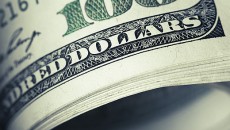Chairman Bernanke Speech Sunday
The Chairman of the Federal Reserve spoke Sunday and addressed specific claims that monetary policy leading up to September of 2008 contributed to the creation of asset bubbles by allowing the free-flow of easy money. He denounced the Taylor rule as a guideline for monetary policy rather than a precise measurement of where the interest rates should be and went on to explain the difficulties of using the standard Taylor rule. The standard Taylor rule uses current data from the current quarter to project which interest rates the fed should use in response to discrepancies between target inflation rates and the real inflation rate measure by the CPI. Chairman Bernanke argued that in a system where monetary policy lags, the standard Taylor rule is inefficient. He spoke about using the alternative Taylor rule which allows for the equation to be run with forecasted data from the FOMC and went as far as to advocate its use.
Referring to the housing bubble, the Federal Reserve Chairman argued that accommodative monetary policy had little or no contribution to the quick appreciation of housing prices domestically that led to a collapse. He argued that according to a study taken by the IMF of 20 countries and their respective nominal housing price increases, the United States has less appreciation in its housing market than many other industrialized nations. He also pointed out that almost all the countries with the most appreciation in housing prices had monetary policies that were less accommodative than that of the United States.
He concluded the speech by advocating a stronger regulatory presence in the financial markets and stressed the importance of maintaining an institution like the Federal Reserve. The Chairman made a few final remarks about the changes occurring in the Central Bank to assure the American public that the Federal Reserve is working diligently to identify and correct some of the problems present in certain financial institutions and finally ended by stressing the importance of regulatory rather than monetary policy to combat bubbles.
Unemployment
ADP Non-Farm Employment change came in worse than expected. However, decreases in job losses may be indicating the possibility of a positive shift in the unemployment rate sometime in 2010. The report showed that 84,000 jobs were lost in the private sector which was down from 169,000 and should the current trend continue, ADP analysts expect that Non-Farm employment may begin to see job increases instead of losses soon. The ADP report takes data each month from approximately 360,000 U.S business clients.
The Department of Labor released the unemployment rate for December which remained at the previous month’s level of 10%. This was in inline with the Bloomberg survey. However the change in NFP (Non Farm Payrolls taken by the bureau of labor) came at -85k jobs lost, worse than the analyst survey which was to be unchanged.
Crude Oil
On Wednesday we saw stockpiles of crude oil increase by 1.33 million barrels to a level of 327.3 million of inventory for the week ending January 1. This was 2.33 million barrels more than the surveyed analysts’ expectation, which amounts to a decrease of 1 million barrels. For the oil futures market, this is typically considered bearish news, as an unexpected increase in supply means that the current spot price is based on a lower supply of barrels and thus must be corrected by the selling the futures contract. This lead to a lower price of crude oil. However, after only taking a slight momentary dip, traders brushed off the data and crude oil rallied on Wednesday to a 14 month high of 83.52 USD.
The sentiment amongst analysts and traders seemed to be mixed. Some believed the price jump was unwarranted, as fuel consumption data came out negative with a decline of 1.6 percent, to a total of 18.8 million barrels a day last week. Short term traders noticed the EUR/USD pair climbed over 100 ticks early Wednesday morning during the European session, which can be taken as a bullish signal for USD priced assets such as crude oil, as the drop in dollar value should be adjusted in the assets price. Along the same lines of a weaker dollar, some analysts believe Bernanke hinted that interest rates will stay at the current low levels amidst the recovery, which encourages a continuing bullish momentum in the economy. As Antoine Halff of Newedge USA Energy Research said, “Prices are up… the funds are coming back into the market”. However, what seemed to be the most popular catalyst for the unexpected oil price increase was the abnormally cold weather the world has seen over the past month, which should lead to an increase in heating oil usage, thus an increase in crude oil demand, which is bullish for oil prices.
Article submitted by: Alex Tarhini and Robert Belsky of the Capital Markets Lab.





